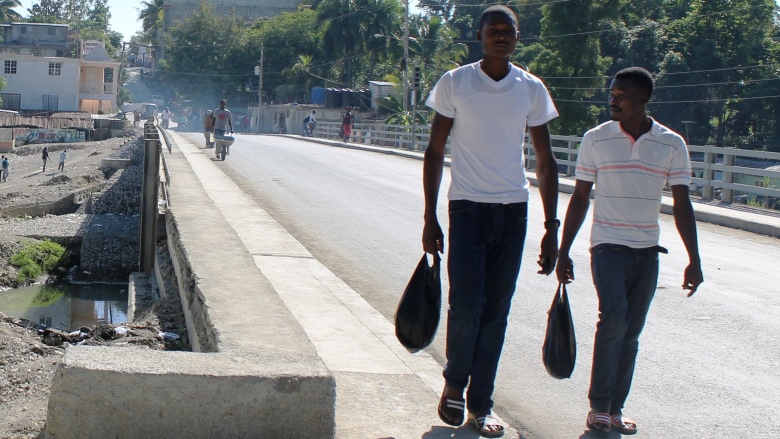Challenge
At the time of Project approval, in November 2008, Haiti had struggled for several decades to emerge from a cycle of political instability and internal conflicts that devastated its economy and weakened state institutions, worsened by poor governance practices which maintained or deepened poverty. In 2004, Haiti was devastated by Hurricane Jeanne, which caused some US$169.5 million in damages, and took more than 4,000 lives. Tropical Storm Noel, which struck Haiti in October 2007, caused flash floods and mudslides in the Western part of the country, resulting in 66 deaths and almost 15,000 lost homes. In March 2008, rising world prices for food and oil triggered violent protests, leading the Senate to vote then Prime Minister Jacques-Edouard Alexis out of office. Finally, after a period of political instability during which the country did not have a confirmed Government, the 2008 hurricane season was particularly severe, with the passage of three major tropical storms and one hurricane (Fay, Gustav, Hanna and Ike - FGHI) over a four-week period. The combined toll of these storms was some 793 killed, and 301 injured, with 1 million people affected. The result was a collapse of the already weak national transport system—several main roads and bridges were heavily damaged, stifling the passage of goods and services and cutting off entire regions from others—and major crop destruction that crippled food production. The Post Disaster Needs Assessment estimated the total damage of FGHI at $897 million, or the equivalent of 14.6 percent of the GDP. All of this was exacerbated by the 2010 earthquake that occurred two years into project implementation and caused unprecedented damage, by far the worst natural disaster to strike Haiti in recent history.
Approach
In response to the 2008 hurricane season, project resources were channeled to repair and reinforce transport infrastructure, key to ensure the continuity of the national road network and restore connectivity to the isolated departments. To provide a sustainable mechanism for improved emergency capacity response, the World Bank also provided tools and technical assistance to strengthen Haiti’s National Disaster Risk Management System. The project also allowed the country to develop the first national data through the Rural Access Index, which included the mapping of the national road network and critical sections.
Results
Between 2009 and 2015, the project restored and improved access for local communities, contributed to building knowledge and to improving management capacity within the NDRMS.
- The project immediately reconnected three severed national roads (RN1, RN2, and RN7), critical for the connectivity in the targeted region and reestablishing access to key economic, social and emergency services of about 2 million affected people;
- The project allowed the completion of the “La Theme” Bridge. By drastically improving access to Mirebalais in all-weather conditions, “La Theme” Bridge” ensure consistent access to the best-equipped hospital in the country and to a major regional road along the fertile valley of Artibonite, supporting the rice and mango agricultural production;
- Ten emergency bridges were purchased and installed. Twenty weakened bridges and road sections were repaired, stabilizing yea-round road access within four departments, resulting in approximately 2 million direct and indirect beneficiaries;
- The repair and protection of bridges and critical spot intervention resulted in the combined rehabilitation of 200 km of road;
- State capacities to respond to emergencies and institutional capacity to reduce vulnerability were improved through the creation of a Vulnerability Reduction Unit (CRV) within the Inter-ministerial Committee for Territorial Development (Comité Interministériel d’Aménagement du Territoire, CIAT), and a CRV and Bridge Management Unit within the Ministry of Public Works, Transport and Communications (MTPTC);
- The project also financed the establishment and execution of the Rural Access Index (RAI).

